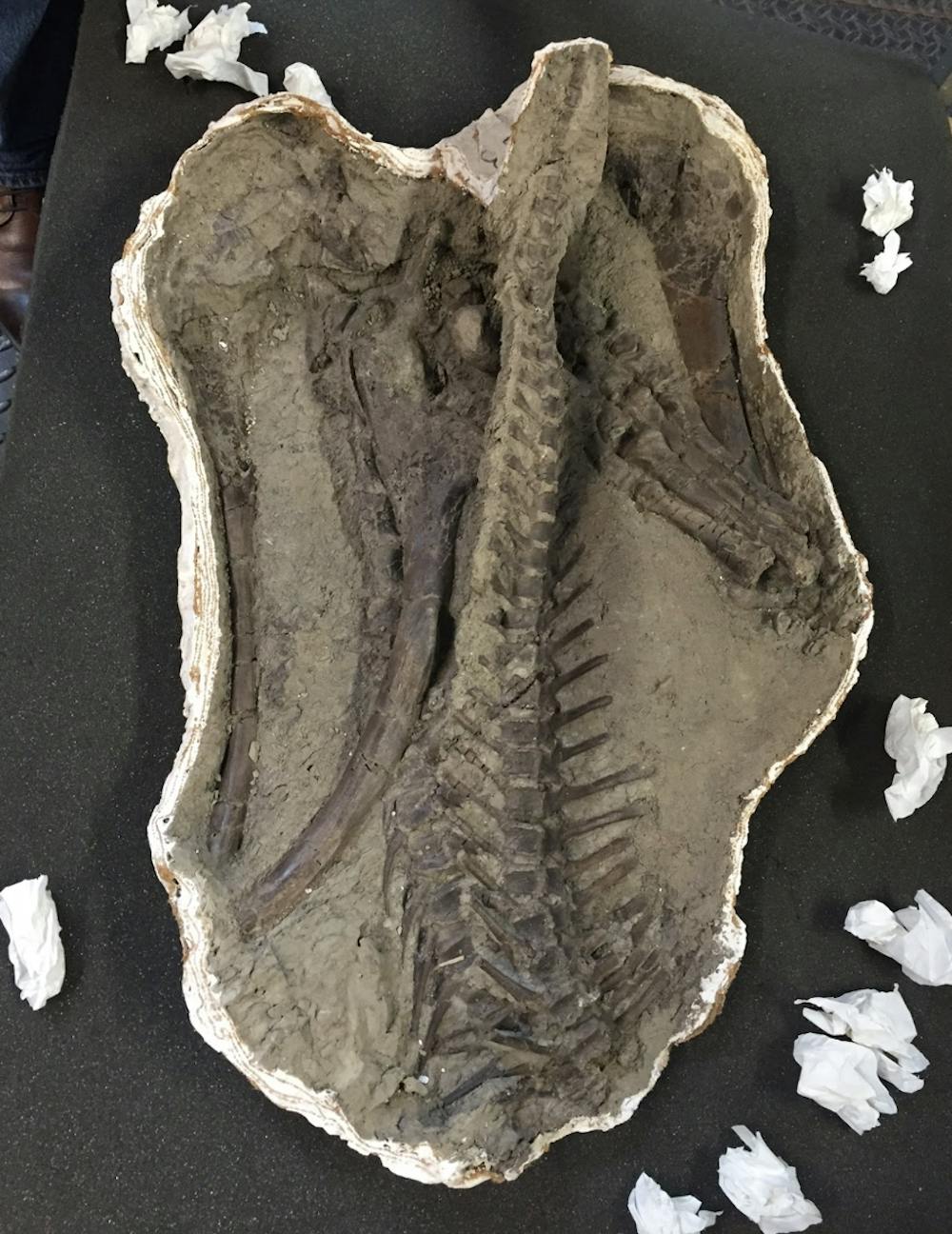Tucked beneath Guyot Hall is a collection of oddities dating from the Cambrian period to the Holocene. It includes hundreds of fossils, minerals, and even entire preserved pieces of coral. The collection’s history is almost as interesting as the items it contains.
The collection of fossils and skeletons comes from four major expeditions. In the first, which provided the basis for the museum’s collection, Professor Henry Fairfield Osborn, Francis Speir, Jr., and William Berryman Scott, all members of the Class of 1877, ventured to Wyoming the same year they graduated. Through trade deals and additional expeditions to Patagonia and Montana, the University accumulated a diverse collection of thousands of specimens from many different archaeological time periods. To display and catalog this growing archive, the University established a museum inside Guyot Hall in 1908.

Guyot Hall.
Jon Ort / The Daily Princetonian
Since then, the collection has grown, with the University becoming a major repository for many unique fossils. It remained publicly displayed in Guyot Hall until the mid-1990s, when the hall was converted to office space. The museum was taken apart and its components moved. The (mostly) authentic saber tooth tiger skeleton, for example, was placed in Frist Campus Center.
While much of the collection was donated or traded — Yale’s Peabody Museum alone has 15,000 vertebrate skeletons from the University's former collection — the 5–10 percent of the University collection that remained was simply left in storage in Guyot Hall or elsewhere off campus.
The collection was all but forgotten until Andrew Xu ’22 found out about the collection while preparing for a high school Science Olympiad fossils competition. Xu now maintains the collection with the help of the Geosciences department.
“The specimens were uncataloged, misplaced, or unidentified. I asked if I could curate them and preserve them for however long they are useful,” said Xu on the subject of maintenance. “My current project is to catalog this information and digitize it for future research,” he said.
Xu spent his summer before sophomore year working to catalog the collection. Initially, the collection had a master catalog, which has since been lost. Thus, many objects remain unclassified, and of limited scientific value.
Xu has worked to remake old labels and re-catalog some items, as well as organize them into more useful categories.

A large part of the collection in Guyot.
Photo Credit: Kris Hristov / The Daily Princetonian
“Many things found here simply don’t exist online. What’s in here could reaffirm current studies on plants and corals. Paleontology is a dated field — a lot of information is not digitized or put into computers,” he explained.
A major issue with the current storage solution is the basement itself, where items are stored in stacked open wooden containers on metal rafters. Each time a wooden container is removed, flakes of wood scrape off and come into contact with samples. This can damage particularly delicate examples.

Geosciences professor Thomas S. Duffy stated that the University plans to maintain the collection for the time being.
“Our current mineral and fossil exhibits in Guyot Hall attract wide interest. While plans for the new building are still under development, we fully intend to maintain the collection in our new location,” Duffy said.
“We are working with the project team on how to best incorporate significant display space for the department’s valued collections,” added University spokesperson Michael Hotchkiss.
Xu plans to continue working with the collection throughout his remaining time at the University.








